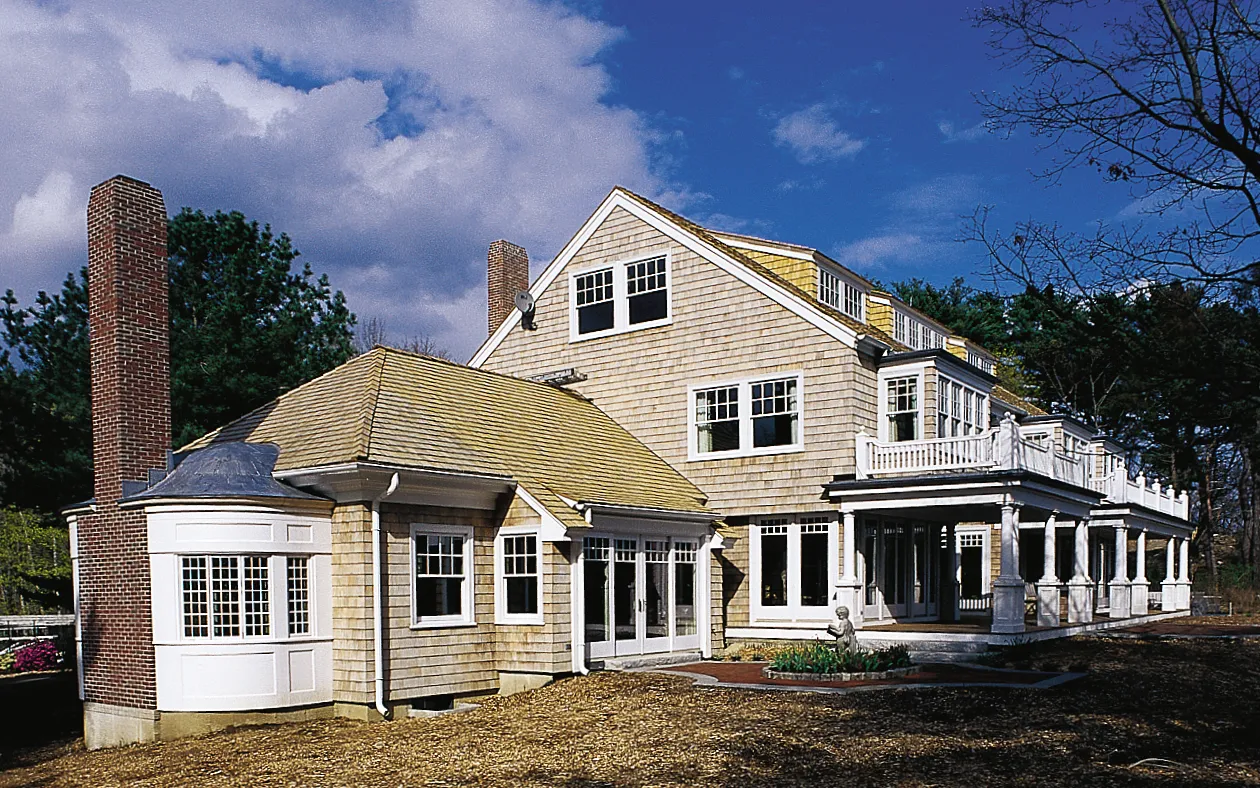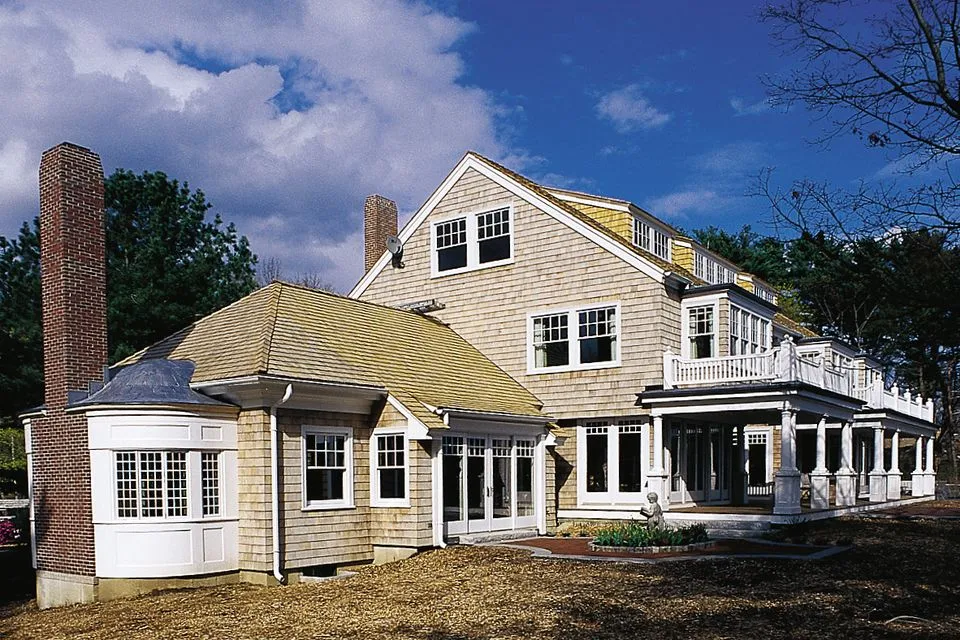
In its former days, the Colonial-Revival portico of the Manchester house stood as a glorious introduction to what lay beyond. Beautifully designed and crafted with Corinthian capitals atop fluted columns and detailed with ornate modillion brackets, this space made for an impressive welcome.
But in the battle against the elements of nature, this treasure of visual detail became buried beneath many layers of heavily applied paint. The paint build-up became so thick and brittle that stress cracks developed. The result was a breached paint system, which left the architectural elements beneath it vulnerable. Brackets and capitals, made of plaster, decomposed in the salt air. Many of the brackets lay on the ground, the nails that once attached them reduced to a residue of rust. The bases of the wood columns were rotted, a process accelerated
by clogged downspouts and overflowing gutters.
Deciding What to Do
So in the course of our current project the question arose, how best to restore this space? Should the architectural elements be replaced or repaired? The pragmatic confronts the philosophical in this typical renovation dilemma. Should the homeowner take this matter to the
carpenter … the architect? … the painter? The wise homeowner may
want to consult with all three.
Not to stereotype any particular trade, but most carpenters will usually
be inclined to take the more pragmatic approach of replacing damaged wood elements. The combined cost of new materials or units, and the labor costs of demolition and reinstallation are often less than the labor-intensive cost of paint removal. And who would argue that the prospect of new surfaces made of low-maintenance, state-of-the-art materials isn’t appealing?
Conversely, architects will tend to take the more philosophical,
preservationist approach. They see an inherent value in the existing, or
original, elements. If and when replacement is the best option, they are keenly sensitive to, and protective of, the scale and proportion of the
original design. Their concern is that when one compromises, even slightly, the dimensions of individual elements — such as when
ordering replacements for columns or capitals — the original and
delicate balance of proportion can all-too-easily be lost.
But good painters are flexible, and should accommodate the technical
demands of either approach. A painter should be knowledgeable about repair and filling systems, such as two-part epoxies, as well as
appropriate protective systems for replacement parts. A painter should
coordinate with the contractor to facilitate cost comparisons between
paint removal and replacement options.
Taking Action
After sorting through the options, it is ultimately up to the homeowner
to decide what approach to take. The options decided upon by the McCues
for restoring their front portico offer a fine example of how to go
about it.
New custom-built columns were installed to replace the four large
columns that support the portico roof. An important part of the ordering
process involved extending a tape measure across the surfaces of the
existing elements and photographing them digitally to document dimensions such as diameter, frequency of fluting, height, etc. These photos were sent to the woodworker’s shop and new redwood columns were accurately reproduced.
The existing capitals atop the large columns had chalked considerably
and significant detail would have been lost in preparing the surface to
accept paint. They were replaced with new plaster units.
The existing brackets around the tablature and over the doorway were
also removed and replaced with new cast-plaster units. Prior to installation, the new brackets as well as the new plaster capitals were immersed in an alkyd masonry sealer, then primed with an oil-base
primer, and finished with two coats of latex paint. Each application required back-brushing to control the paint and minimize the loss of detail.
Though the brackets are traditionally attached to the soffit with nails or screws through a drilled pilot hole, a marine adhesive was used instead, which will increase the longevity of the bracket. Because the marine adhesive is slow-setting, a dab of hot-melt glue was applied to hold the bracket in place until it had a chance to cure. Acrylic caulking was applied to fill all the joints between the tops of the brackets and the soffits to which they were attached.
Existing paint was removed from all other surfaces using a solvent-based stripper. Heat guns were used as the outside temperatures grew colder. Stainless-steel-blade scrapers in a variety of shapes and profiles were
the primary removal tools. It was necessary to use dental tools to
excavate the paint from the crevices of the smaller capitals located
adjacent to the doorway.
Restoring a portico such as the McCues’ is always a monumental task — and a considerable expense — especially given its relatively small space. So is it worth it? Perhaps not in every case, but consider: this space sets the tone for the house beyond. And for This Old HouseManchester project, it is the introduction to a story of smart design, cutting-edge technology, and a commitment to excellence and the highest level of craftsmanship, which is what this particular old house is all about. And that calls for nothing less than a grand entrance.
John Dee was the painting contractor for the Manchester project.

